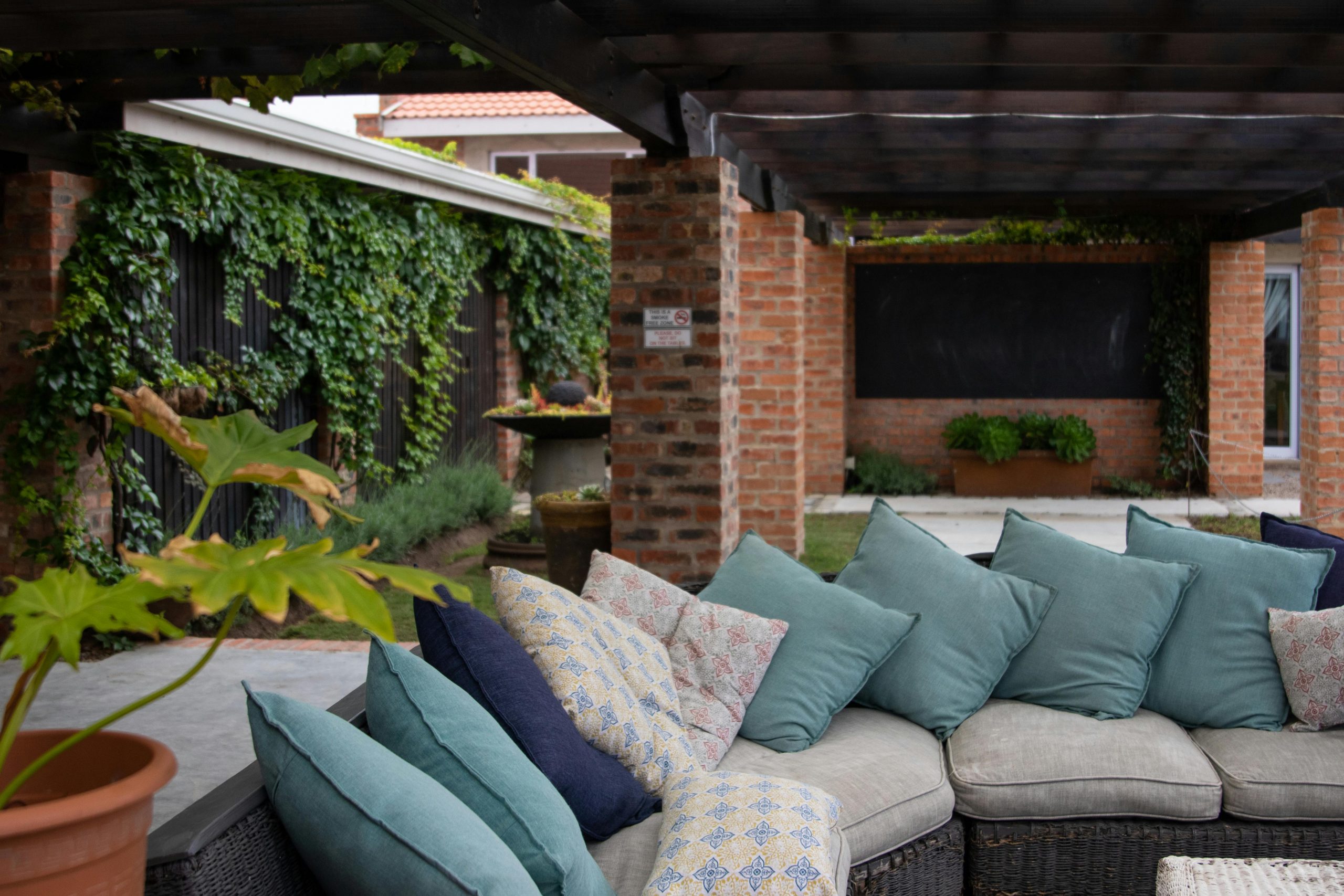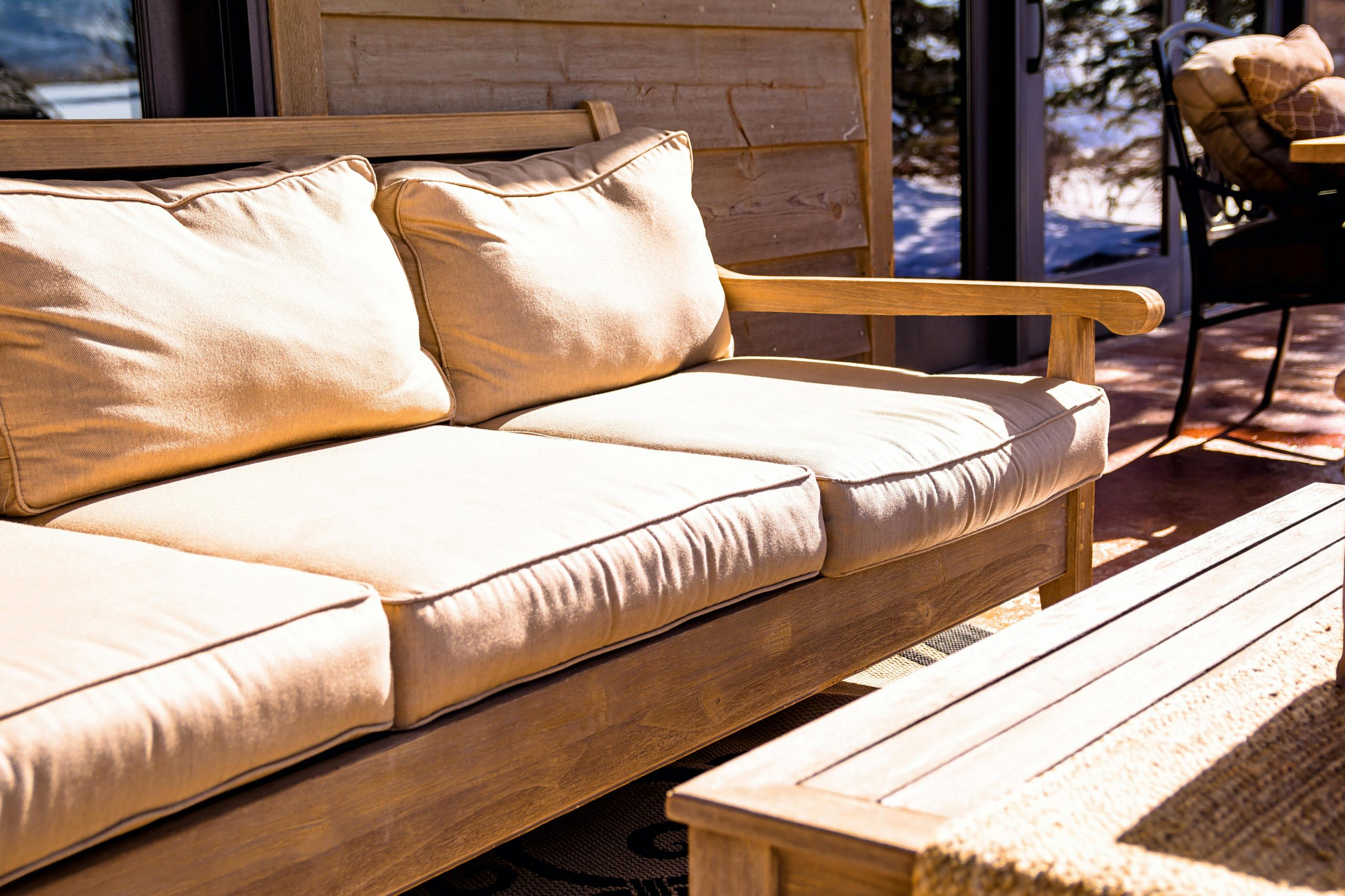How to Wash Outdoor Cushions & Keep Them Fresh All Year

Outdoor cushions make your patio or deck more inviting, but exposure to dirt, sunlight, and moisture can quickly make them look tired. Whether they’re stained by food, covered in pollen, or just dull from weather, proper cleaning is key to keeping them fresh and extending their life.
Washing outdoor cushions may seem daunting, but with the right techniques and a bit of consistency, you can restore them to their original color and comfort. This guide walks you through how to clean, dry, and maintain outdoor cushions step-by-step, along with special care tips for different fabrics and situations.
Why Regular Cleaning Matters

Outdoor cushions are constantly exposed to the elements—sun, rain, wind, and even insects. Over time, this exposure leads to dirt buildup, mold, and fading. Regular cleaning isn’t just about looks—it’s also about health and durability.
Here’s why cleaning outdoor cushions is important:
- Prevents Mold and Mildew: Moisture and organic matter create a perfect environment for mold growth.
- Maintains Color and Fabric Strength: UV rays break down fabric fibers, but cleaning and protecting the cushions help prevent premature fading.
- Improves Air Quality: Cushions can collect pollen, pet dander, and dust, triggering allergies.
- Extends Longevity: Clean, well-maintained cushions last longer and save money on replacements.
Step 1: Check the Cushion Tags
Before you start scrubbing, read the care labels. Manufacturers include specific instructions about what the cushion material can handle.
Look for the following details:
- Fabric type: Acrylic, polyester, or olefin are common outdoor fabrics.
- Filling material: Some cushions have foam inserts that can’t be soaked.
- Washing method: Some covers are removable and machine washable, while others require hand washing.
- Water resistance: Check if your fabric has a waterproof coating that needs gentle care.
Never ignore the label—it helps you choose the safest cleaning method and prevents damage or shrinkage.
Step 2: Remove and Clean Cushion Covers
If your cushion covers zip off, the process is much easier. Removable covers can often be washed just like regular laundry—just with a few precautions.
How to wash removable covers:
- Vacuum first: Use a handheld vacuum to remove dust, hair, and debris before washing.
- Pre-treat stains: Apply a mild stain remover or a mix of baking soda and water to problem spots.
- Machine wash gently: Use cold water and mild detergent on a delicate cycle.
- Air dry: Avoid the dryer; instead, lay covers flat or hang them to dry completely.
Pro Tip: To prevent fading, avoid direct sunlight while drying, as UV rays can weaken fabric dyes.
Step 3: Cleaning Cushions Without Removable Covers
If your cushion covers can’t be removed, you’ll need to clean them by hand. Luckily, you can get great results using household supplies.
What You’ll Need:
- Bucket of warm water
- Mild dish soap or laundry detergent
- Soft-bristled brush or sponge
- Garden hose
- Towels for drying
Cleaning steps:
- Vacuum the surface: Remove loose dirt, leaves, and debris.
- Spot-clean stains: Mix one tablespoon of mild detergent in a quart of warm water. Apply with a soft brush and scrub gently.
- Wash the full surface: Dip the brush in soapy water and work in circular motions. Focus on seams where dirt tends to collect.
- Rinse thoroughly: Use a garden hose to rinse away soap residue.
- Blot and dry: Squeeze out excess water with towels and let the cushions air dry in a sunny, well-ventilated area.
Avoid using high-pressure washers—they can strip protective coatings and damage stitching.
Step 4: How to Remove Mold and Mildew
Mold and mildew are common problems, especially in humid climates. They not only look bad but can also cause unpleasant odors and respiratory issues.
To treat mold or mildew:
- Wear gloves and a mask: Protect yourself from spores.
- Mix a cleaning solution: Combine 1 cup of white vinegar with 1 gallon of warm water.
- Scrub gently: Apply the mixture with a soft brush and let it sit for 15 minutes.
- Rinse thoroughly: Use a hose to remove all residue.
- Dry completely: Leave the cushions in direct sunlight for several hours to ensure they dry fully.
Alternative cleaner: If vinegar doesn’t work, use a solution of one tablespoon of borax per cup of water. Avoid bleach unless your cushion label specifically says it’s safe.
Step 5: Handling Tough Stains
Outdoor cushions face spills from food, drinks, sunscreen, and even bird droppings. Different stains need different treatments.
Common stains and how to remove them:
- Grease or oil: Sprinkle baking soda on the stain, let it sit for 10 minutes, then brush off and clean with dish soap.
- Wine or juice: Use a 50/50 mix of water and vinegar to blot the area before rinsing.
- Sunscreen: Apply a few drops of dish soap and gently scrub in circles.
- Tree sap: Rub with rubbing alcohol on a clean cloth before washing.
Tip: Always test cleaning solutions on a small, hidden section of fabric first to avoid discoloration.
Step 6: Drying Outdoor Cushions Properly
Drying is just as important as washing. Cushions that stay damp too long can develop odors or mold.
Proper drying steps:
- Place cushions upright in a sunny, breezy area.
- Flip every few hours to ensure even drying.
- Avoid stacking or compressing cushions while drying.
- If the weather is humid, use a fan or dehumidifier indoors to speed up the process.
Never use a dryer unless the manufacturer specifically allows it—it can melt synthetic fibers or damage fillings.
Step 7: Reapply Fabric Protector
Once your cushions are completely clean and dry, protect them from future stains and fading.
How to apply protection:
- Use a UV-resistant fabric spray to prevent sun damage.
- Choose a water-repellent spray designed for outdoor fabrics to make cleaning easier next time.
- Reapply every few months or after each wash for best results.
This simple step helps repel dirt, water, and mildew while keeping colors vibrant.
Seasonal Maintenance and Storage Tips

Outdoor cushions benefit from periodic deep cleaning and smart storage. A little care between seasons goes a long way.
Spring and Summer:
- Shake out or vacuum cushions weekly to remove dust.
- Spot clean as needed to prevent stains from setting.
- Keep cushions out of the rain or store them in a deck box when not in use.
Fall and Winter:
- Wash and dry cushions thoroughly before storage.
- Store in breathable, waterproof bins or bags to protect from moisture.
- Keep in a dry, temperature-controlled area like a garage or basement.
Pro Tip: Use this same seasonal care routine when learning how to clean outdoor furniture, as cushions often share the same care requirements as patio sets.
How Often Should You Clean Outdoor Cushions?
The ideal cleaning frequency depends on your environment and use.
General guidelines:
- Light use: Clean every 3–4 months.
- Heavy use or humid climates: Clean monthly.
- After spills or storms: Spot clean immediately.
Consistency helps prevent buildup and makes each cleaning easier.
When to Replace Outdoor Cushions
Even with the best cleaning routine and regular maintenance, outdoor cushions eventually wear out. Exposure to sunlight, moisture, and temperature changes can gradually weaken the materials, leading to reduced comfort and appearance. Knowing when to replace your cushions helps maintain both the beauty and functionality of your outdoor living area.
Signs It’s Time to Replace Your Outdoor Cushions
Keep an eye out for these common indicators that your cushions may have reached the end of their lifespan:
- Fabric Feels Brittle or Faded: UV rays break down fibers over time, causing the material to lose flexibility, fade in color, and sometimes even crack.
- Foam Doesn’t Spring Back: When the inner filling becomes compacted or lumpy, it won’t provide adequate support or comfort.
- Persistent Mildew or Odor: If deep cleaning doesn’t remove the smell or mold, it means the moisture has penetrated too deeply into the filling.
- Torn Seams or Waterlogged Filling: Damaged seams or soaked cushions can no longer effectively resist moisture or maintain shape.
- Loss of Shape or Sagging: If cushions flatten quickly after sitting, they’re no longer offering proper support.
Why Replacement Matters
Replacing worn-out cushions is more than just an aesthetic choice — it also improves comfort and hygiene. Old, moldy cushions can harbor bacteria or allergens, while flattened ones make lounging uncomfortable.
A fresh set of cushions can:
- Instantly brighten your outdoor décor and give furniture a brand-new look.
- Enhance comfort, especially if you choose higher-quality or memory foam options.
- Improve durability by selecting cushions made with UV- and water-resistant fabrics.
Pro Tip
When shopping for replacements, look for removable, washable covers and quick-drying foam. These modern materials are designed to withstand the elements and make maintenance much easier.
Replacing old cushions not only restores comfort but also reinvigorates your entire outdoor setup, making it a more inviting and relaxing space for seasons to come.
Conclusion: Keep Your Cushions Fresh All Year
Washing outdoor cushions doesn’t have to be complicated. With regular cleaning, quick stain treatment, and proper storage, you can extend their life for years. Whether you hand wash or machine clean, the key is consistency and gentle care.
Your outdoor seating area should be a relaxing retreat—not a chore to maintain. With the right approach, your cushions will stay fresh, comfortable, and ready for every season of outdoor living.
